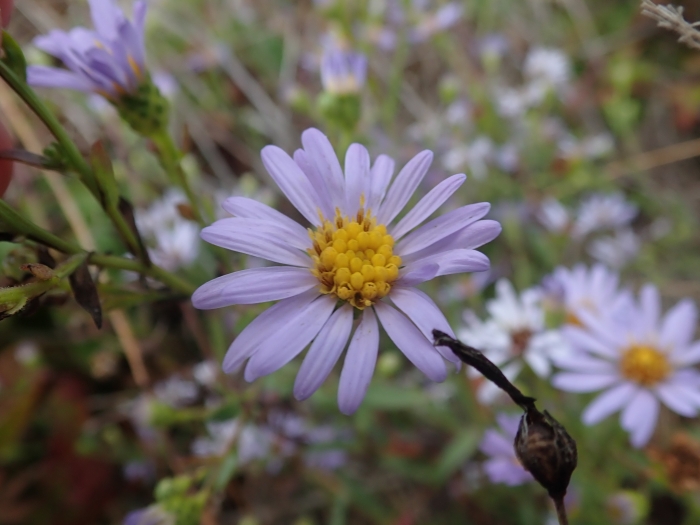Pacific Aster
(Symphyotrichum chilense)
Pacific Aster (Symphyotrichum chilense)
/
/

joergmlpts
CC BY 4.0















































Estimated Native Range
Summary
The Pacific Aster is valued for its long blooming period and the vibrant color it adds to gardens. It is used in native plant gardens, pollinator gardens, and as part of naturalistic landscaping. This plant is relatively low maintenance, requiring full sun to part shade, low to medium water, and well-drained soils. While it is adaptable to various soil types, it prefers those that are not too rich, as overly fertile soils can lead to leggy growth. Pacific Aster can spread through rhizomes, making it useful for erosion control but also potentially aggressive in garden settings. It is important to manage its spread to prevent it from becoming invasive.CC BY-SA 4.0
Plant Description
- Plant Type: Herb
- Height: 1-4 feet
- Width: 2-3 feet
- Growth Rate: Moderate
- Flower Color: Purple
- Flowering Season: Summer, Fall
- Leaf Retention: Deciduous
Growth Requirements
- Sun: Full Sun
- Water: Medium
- Drainage: Medium
Common Uses
Bank Stabilization, Bee Garden, Bird Garden, Butterfly Garden, Drought Tolerant, Erosion Control, Fire Resistant, Low Maintenance, Potted Plant, Salt Tolerant, Showy Flowers, Street Planting
Natural Habitat
a variety of habitats including open woodlands, meadows, coastal prairies, and riparian zones in the West Coast of North America to the Channel Islands
Other Names
Common Names: Common California Aster, Aster De Californie
Scientific Names: , Symphyotrichum chilense, Aster chilensis, Symphyotrichum chilense var. invenustum, Aster radula, Aster sonomensis, Aster chilensis var. invenustus, Aster chilensis var. medius, Aster chilensis var. chilensis, Aster chamissonis
GBIF Accepted Name: Symphyotrichum chilense (Nees) G.L.Nesom